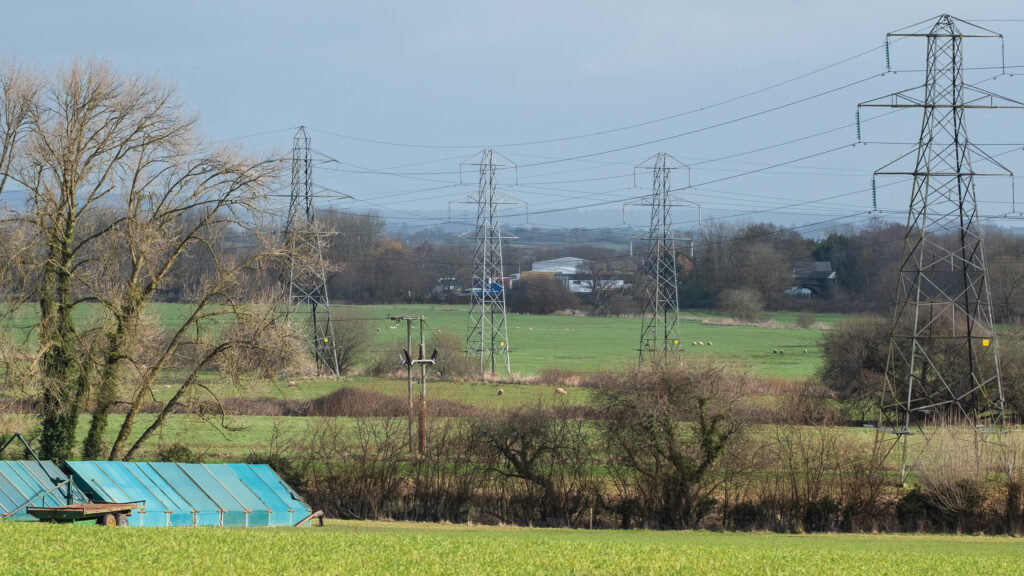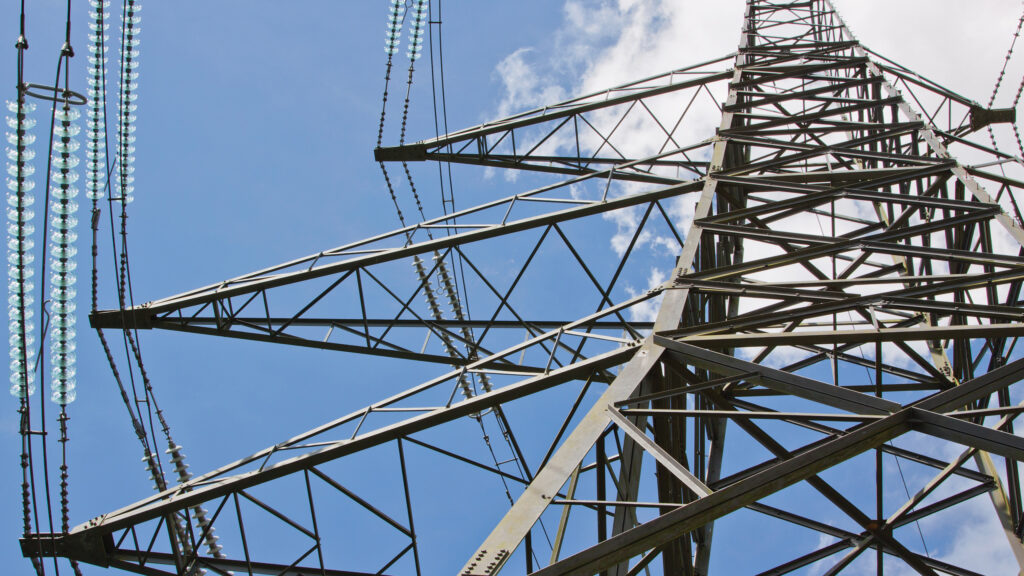Clean energy 2030 – a government at loggerheads with farmers?
 © Adobe Stock
© Adobe Stock The UK government has ambitious plans to increase national energy production to reduce reliance on imports and move towards 100% clean energy by 2030.
But for this to become reality, double the amount of infrastructure as has been built in the past decade is needed, including onshore and offshore cabling, plus accompanying enabling works.
See also: The pros and cons of solar farm development
The electricity network currently includes around 500,000 miles of wires and cables transporting power around Great Britain and accommodating some 62% of annual demand from clean power sources.
Energy companies are enthusiastic about the goals and eager to help the government meet its targets.
Changes to planning regulations could ease the path for those who want to include solar or wind projects on their land.
Campaigners and landowners on the other side of the fence, however, remain firmly opposed to infrastructure plans that take prime food-producing land out of production.
Why it is unavoidable
The majority of 2030 clean power projects are already in the pipeline and offshore wind is set to be the bedrock of the system, according to the National Energy System Operator (NESO).
“It is no longer a question of whether we build the new infrastructure we need, but a question of how – and this must be done in lockstep with local communities,” says deputy prime minister and housing secretary Angela Rayner.
The government is fully committed to pushing its plans through, evidenced by its intervention in the solar development at Eden Farm, Old Malton, North Yorkshire, which has recently been approved, despite strong local opposition.
“What the government did in respect of the solar energy scheme in North Yorkshire indicates the level of drive that there is to press ahead with these things, despite the impact on the tenant farmer,” warns Tenant Farmers Association (TFA) chief executive George Dunn.
Carmarthenshire MP Ann Davies, who has been campaigning against infrastructure such as pylons in the Tywi valley for over two years, is also less than enchanted with the situation.
“Think about the carbon footprint of the concrete needed to anchor each one of those pylons, in addition to the carbon footprint of the steel itself,” she says.
“There must be a better way of transmitting – a greener and more ecologically friendly way.”
The solution, Mrs Davies says, is to put cables underground, which would avoid a pylon going up every 250m along routes in her constituency.
Pylons vs underground cables
The reason for making pylons the first choice mainly comes down to cost.
The Department for Energy Security and Net Zero highlights that overhead lines are much cheaper to build, saying that “undergrounding” can be up to 10 times more expensive – costs, they say, which would be passed on to consumers.

© Adobe Stock
Offshore cabling is no better.
To deliver the same capacity as pylons, which can carry 6 GW of power, National Grid says they would need to build three offshore cable routes and several converter stations onshore – coming in at an estimated £4bn.
That compares with around £1bn for the onshore route.
In addition, underground cabling takes longer to install, can still have an environmental impact, and is harder to maintain.
View from the unions
Farmers are not opposed to clean energy developments and investment in renewable energy generation.
Alongside food production, it is an important source of diversification, says the NFU, but it must not go against food production.
“Accelerating plans for an offshore undersea network would reduce the need for disruptive pylons or underground cables across large areas of farmland,” says NFU vice-president Rachel Hallos.
Where pylons are unavoidable, she adds, a flexible approach to overhead lines and underground cables must be considered, while offering proper compensation.
The Farmers’ Union of Wales (FUW) adds that all future infrastructure developments should be subject to socio-economic impact assessments, and decisions must be based on data.
The TFA, however, thinks that the conversation on pylons versus cables is a distraction.
“If we want to move towards a green energy revolution, we need to look at developing localised and micro schemes, where we are generating and using that power locally,” says Mr Dunn.
Compensation
An annual payment of £250 could soon be making its way into people’s bank accounts if they live near pylons and power infrastructure, plans which the UK government hopes to have in place by 2026.
For landowners, compensation to host infrastructure in many cases will be agreed on an individual basis and can differ depending on the type of agreement.
A wayleave agreement, for example, is a terminable licence for which annual rent and compensation is paid. An easement, which is a legal right and normally exists in perpetuity, secures the landowner a one-off payment.
Tenant farmers, however, could yet again find themselves having to give up their security without adequate compensation, as the legislation is out of date, warns Mr Dunn.
“The level of compensation is set at five or six times the rent passing, which comes nowhere near the real loss that a tenant farmer would face in losing land to renewable energy infrastructure,” he says.
In Wales, electricity distributor Green Gen Cymru is offering easement (one-off) payments of £3,750 per pylon on permanent pasture and £5,000 for arable land.
For third party land, where access to a pylon is required through right of way, £1,000 is offered, and for underground cables landowners can expect about 80% of agreed land value over the easement width, with a minimum land value £7,500/ha.
Residents in Wales say the level of compensation is unacceptable.
They have been advised by local valuers and auctioneers that pylons on their land could result in property devaluation of up to 30% and think that the offer is “insulting”.
Green Gen Cymru insists the compensation offered is “in line with current legislation”.
Community spirit
A key message from government, energy distributors and providers is that bringing communities along in a consultative and engaging way is key to success.
In England, Telis Energy UK chief executive, William Duncan, says more emphasis needs to be put on developers engaging genuinely with communities.
“More listening and more consideration of concerns is needed so that it’s a considerate design that balances the needs of different stakeholders and different groups, of which communities should be the most important one,” he says.
Trouble afoot in the Welsh valleys
Farmers in the Tywi and Teifi valleys say they don’t have a problem with clean energy, but the way that power will get transmitted back to the grid by Green Gen Cymru has been upsetting local residents.
Llandovery pylon steering group co-chair Dyfan Walters runs a 77ha beef and sheep holding near Llandovery.
He says farming practices are set to take a hit if plans for overhead transmission infrastructure continue.
He explains that land taken out of production to allow the steel towers to go up, which could take about two years, means less available land for spreading manure and complying with current Welsh government regulations, while also destroying ancient woodland and habitat.
“With the NVZ regulations in place, who can afford to have any land taken away? We need that land, otherwise we’re looking at further stock reductions,” he says.
“With the Sustainable Farming Scheme coming in, we need to look at tree cover, habitat and development of habitat. Having that habitat destroyed – that’s going to be a problem.”
Going underground
What the community wants to see is for the cables to go underground through cable plough method, says Eirian Edwards.
He runs an animal feeds business and owns 28ha of land near Llandovery and also co-chairs the Llandovery pylon steering group.
Mr Edwards says the costs quoted for undergrounding alternatives in comparison with pylons, that would stand between 27m and 50m tall, are wrong and out of date.
“Projects that have been costed rely on old processes and don’t take new technology into account.
“Everything has improved and on a standard 132kv line there is little difference to true cost,” he claims.
Lack of consultation
Residents say it has been two years since the original consultation with Green Gen Cymru, but the developers have still not presented them with pylon alternatives and employed intimidation tactics to get access to land for surveys.
“The whole community, along the whole 90km route, are saying put it underground – I can safely say that the views of the community are not being taken on board,” says Mr Edwards.
“Around 95% of farmers in the area have refused access for surveys and they will continue to refuse access.
“Now we’re seeing intimidation tactics by Green Gen Cymru and them trying to force access onto land. Their engagement has been shocking.”
Responding to the criticism, Green Gen Cymru says it understands that people have concerns about energy infrastructure projects and are committed to having open and respectful conversations.
“Unfortunately, we have been unable to reach voluntary agreements with all landowners, and some as a result have received statutory notice under section 172 of the Housing and Planning Act,” says a spokesperson.
